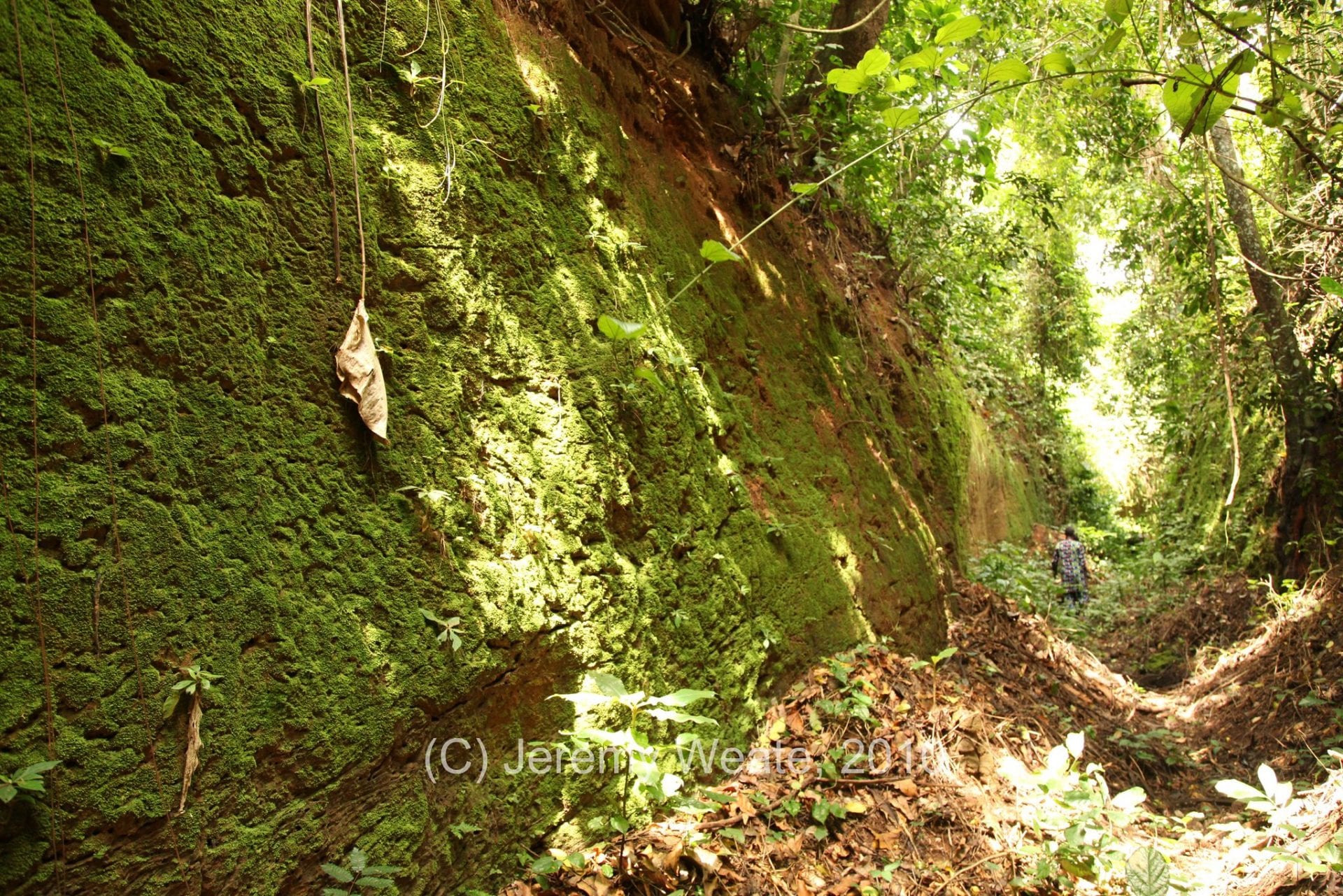Sungbo’s Eredo is one of the largest man-made monuments in Africa, consisting of a giant system of ditches and embankments that surrounds the entire ljebu Kingdom in the rain forests of south-western Nigeria.
The ljebu Kingdom emerged around the 15th or 16th century AD in southern Yorubaland and was centred on the capital at Ijebu Ode. The kingdom was inhabited by the ethnic Yoruba that still live-in parts of western Africa, mainly in the countries of Nigeria, Benin, and Togo.
The builders of Sungbo’s Eredo excavated 3.5 million cubic metres of earth to create a 165 km long ditch with steep vertical walls that run a length longer than Hadrian’s Wall in England (117.5 km), and a raised inner embankment that encircles an area larger than Greater London.
The surviving archaeological evidence confirms signs of settlement around Eredo from the Neolithic period, with some indication of human activity as far back as the Late Stone Age. Dating the monument has been inconclusive, but one of the generally accepted dates comes from a radiocarbon study that suggests either AD 870, and AD 670 to 1050.

Adjacent to the earthwork within Oke-Eri is a sacred grove, that according to local oral tradition houses the tomb of the legendary Queen of Sheba from biblical and Quranic text, who the Oke-Eri people refer to as “Bilikisu Sungbo” which gave rise to the name of “Sungbo’s Eredo”, meaning “Queen of Sheba’s Embankment” (“Eredo” meaning “embankment”).
Another popular myth connects the monument to a fabled wealthy and childless widow of the Yoruba aristocracy also called Oloye (meaning ruler) Bilikisu Sungbo.
Whilst there is no archaeological evidence to support the oral tradition connecting the monument to the Queen of Sheba, the sheer size of Sungbo’s Eredo is a testament to the massive, organised processes of centralised communities, and the sophistication of the early African societies involved in the construction.
Header Image Credit : Jeremy Weate – CC BY 2.0





